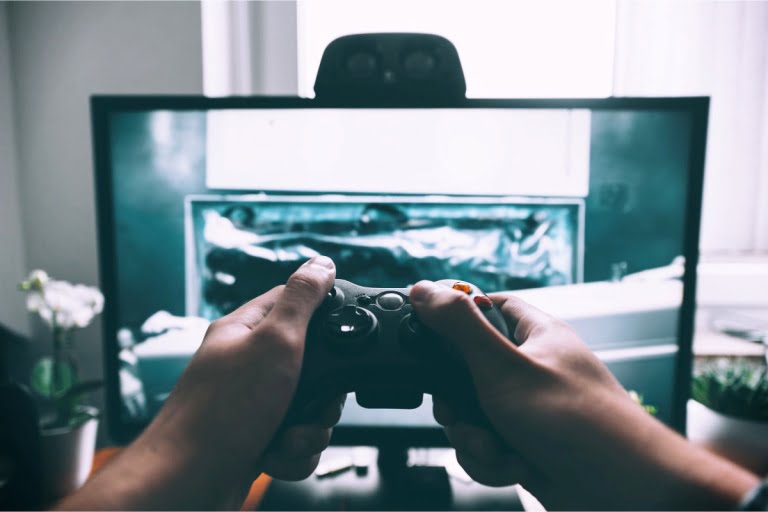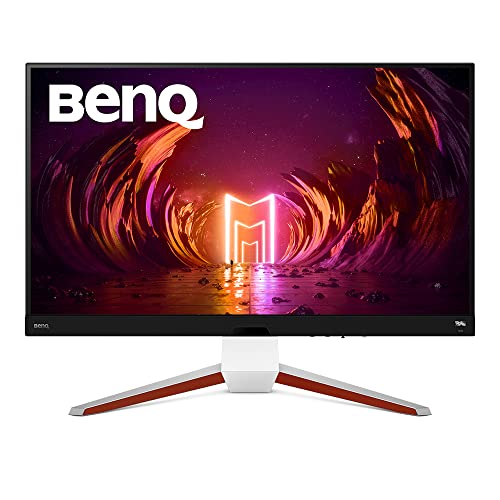To experience the buttery smooth gameplay, though, you’ll need to purchase a console gaming monitor capable of harnessing the full potential of these machines.
The only problem? It isn’t easy to pick out the proper hardware when every product claims to be the best console monitor.
Don’t sweat it, though – your boys tested multiple gaming monitors, weighed the pros and cons, and shortlisted the 11 best console gaming monitors money can buy in 2023.
Top Console Gaming Monitors for 2023
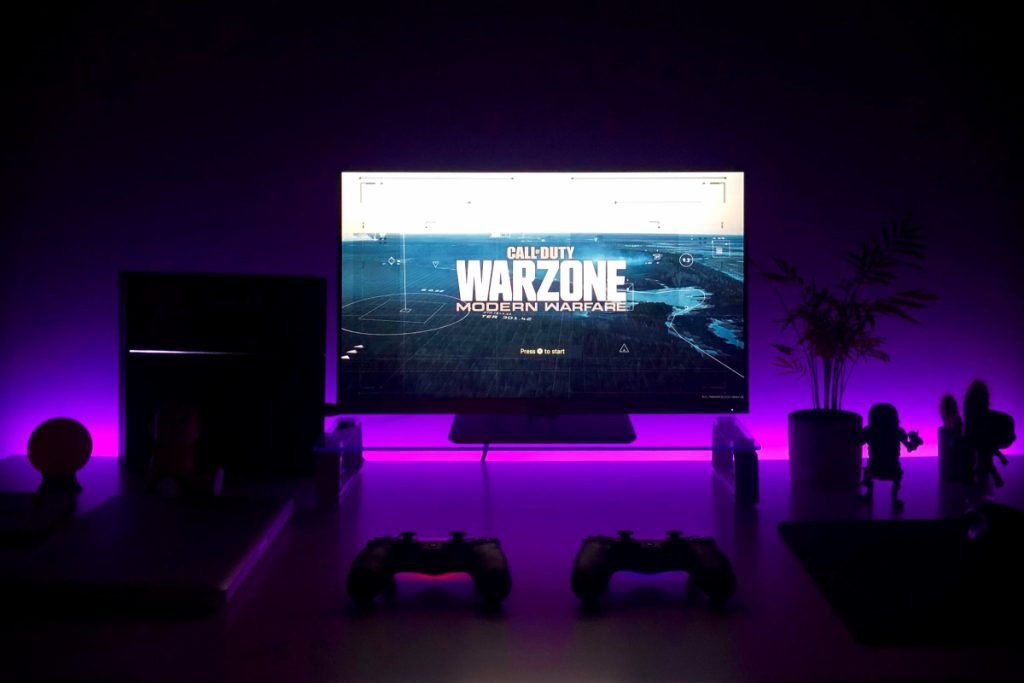
- ViewSonic ELITE XG320U: The top console gaming monitor with a 4K, 144 Hz output, a super quick 1ms response time, and a display size of 31.9”. Vibrant colors with accurate saturation and gamut. Quite expensive, though.
- Gigabyte M32U: The best 4K gaming monitor for PS5 with 144 Hz refresh rate and 1ms response time. This monitor offers fantastic color accuracy, gamut, and calibration with no gradient banding.
- BenQ MOBIUZ EX3210U: The best Xbox gaming monitor with a 144 Hz refresh rate and a 2ms response time. It supports FreeSync Premium Pro with LFC for a screen tear-free gaming experience even at higher FPS.
- LG UltraGear 32GN650-B: A 1440p VA LCD monitor with a 5ms response time and 165 Hz refresh rate. Although a bit lacking in color due to just 8-bit color depth, it more than makes up for it in the performance department.
- Acer Predator XB283K: A 28”, 4K IPS monitor with a 144 Hz refresh rate that supports 10-bit colors with HDR400 and a peak contrast ratio of 4000:1 – an excellent pick for Sony and Microsoft consoles.
- Sceptre Ultra-Wide C355W: An ultra-wide 21:9, 1440p monitor with a refresh rate of 100 Hz. Thanks to a W-LED backlight, the monitor has a high 3000:1 contrast ratio with a wide dynamic range.
- LG 27GN950-B UltraGear: The best 4K monitor for competitive eSports gaming with a lightning-fast 1ms response time. The high-performance Nano IPS panel features excellent color accuracy, albeit an average input latency of just 5ms.
- ASUS ROG Strix XG17: A compact, portable gaming monitor with 1080p resolution, 240 Hz refresh rate, and FreeSync support over micro HDMI 2.0.
- Samsung Odyssey Neo G7: A fantastic curved monitor equipped with a VA panel, 4K 165 Hz refresh rate, tremendous dynamic range, and a high contrast ratio of 3300:1. Prepare to dish out the big bucks for this one.
- AOC CQ27G2: A budget-friendly 1440p 144 Hz monitor with a good contrast ratio and dynamic range. The 8-bit colors are lacking, but the gaming performance is impressive, thanks to FreeSync premium.
- Asus TUF Gaming VG289Q1A: Another budget-friendly console gaming monitor with a 4K 60 Hz resolution. Standout features include a 5 ms response time, 10-bit color with HDR10 support, and a peak brightness of 350 nits. The verdict: it punches above its weight.
- Top Console Gaming Monitors for 2023
- Is Console Gaming Better on a Monitor?
- Best Console Gaming Monitors [2023 Review!]
- ViewSonic ELITE XG320U – Best Console Gaming Monitor Overall
- Gigabyte M32U – Best Gaming Monitor for PS5
- BenQ MOBIUZ EX3210U – Best Gaming Monitor for Xbox Series X
- LG UltraGear 32GN650-B – Best Gaming Monitor for Xbox Series S
- Acer Predator XB283K – Best 4K Monitor for Console Gaming
- Sceptre Ultra-Wide C355W – Best Next Gen. Console Gaming Monitor
- LG 27GN950-B UltraGear – Best Low Input Lag Console Gaming
- ASUS ROG Strix XG17 – Best Portable Console Gaming Monitor
- Samsung Odyssey Neo G7 – Best Curved Monitor for Console
- AOC CQ27G2 – Best Budget Console Gaming Monitor Under $300
- Asus TUF Gaming VG289Q1A – Best Budget 4K Gaming Monitor
- Comparing Top Console Gaming Monitors for 2023
- How to Choose the Best Monitor for Console Gaming
- Frequently Asked Questions about Console Gaming Monitors
- Can You Plug a Console Directly into a Gaming Monitor?
- Why Are Gaming Monitors More Expensive Than TV Sets?
- What Hz Monitor is Good for Console Gaming?
- Is 60 Hz Vs. 120 Hz Noticeable?
- Can PS4 or PS5 Run 144Hz?
- Is 1440p better than 4k for the PS5?
- What is the Best Size Monitor for Gaming?
- Is a Curved Monitor Better for Gaming?
- Does a Curved Monitor Affect Your Aiming When Playing FPS Games?
- What Gaming Monitor Does Nickmercs Use?
- Conclusion
Is Console Gaming Better on a Monitor?
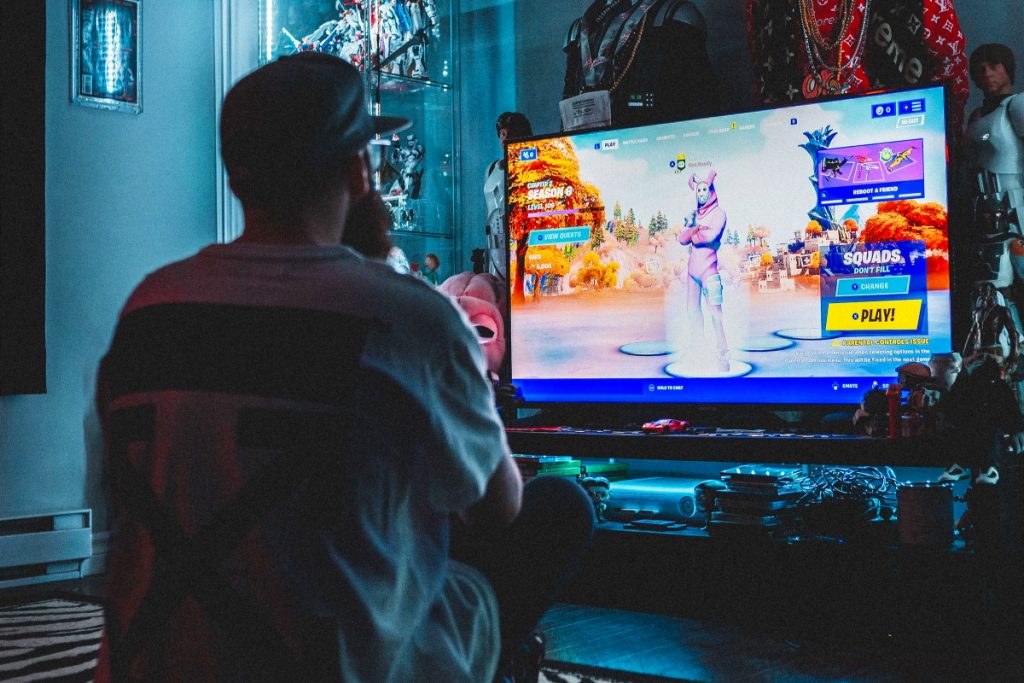
Yes. Compared to traditional TV sets, gaming monitors offer the following:
- Faster refresh rates (120Hz or more).
- Quicker response times (5ms or less).
- Higher pixel densities (100 DPI or higher)
- Variable refresh rates (G-Sync/FreeSync).
- No screen tearing.
- Lower input latency.
- Curved displays.
All these features dramatically improve the gaming experience on both PCs and consoles. So, which monitor is best for console gaming?
Best Console Gaming Monitors [2023 Review!]
Given the recent rise in popularity of online streaming on Twitch and YouTube, the market is saturated with gaming monitors. In addition to testing dozens of monitors ourselves, we also referred to best gaming monitor Reddit threads and other popular online gaming forums.
After careful consideration, we shortlisted 18 gaming monitors and put them through a series of tests.
Our Testing Methodology:
For this review, we hooked up each monitor with a standard test PC (i5-12400F + RTX 3060 Ti) and ran multiple tests to check color patterns, gray tone uniformity, color distances, viewing angle, gamma, pixel response time, image sharpness, SDR/HDR, color gamut and gradients – factors that determine the overall gaming experience.
Then, we tested each monitor’s Variable Refresh Rate (VRR) on our Xbox Series X and PlayStation 5 using cross-platform titles like Fortnite, Doom: Eternal, and Call of Duty: Warzone.
The test included identifying potential screen tearing issues, image flickering, ghosting, and motion judder due to uneven frame pacing.
Because gaming needs vary from one person to another, this list contains 11 console gaming monitors based on buyers’ needs and interests. Enjoy!
ViewSonic ELITE XG320U – Best Console Gaming Monitor Overall
Gamers with big pockets will be hard-pressed to find a better console gaming monitor than ViewSonic’s Elite XG320U – it checks out all the boxes as it comes with a 1000:1 contrast ratio and 600 nits of peak brightness.
The basic specs include a 4K, 144 Hz IPS display, and 31.9” screen size with a pixel density of 137 PPI. The HDR600 support in addition to the previously mentioned 600 nits peak brightness and 178-degree viewing angles are just a part of the amazing features this monitor has.
The ViewSonic Elite XG320U has a color depth of 10-bits and fast connectivity thanks to three display inputs at the back: an HDMI 2.0 with an HDMI 2.1 and a DisplayPort 1.2. In addition, a FreeSync Premium Pro feature ensures a super-fast response time of 1ms.
The monitor has an extensive color gamut. The colors were spot on, with no oversaturation during the testing phase. There were no complaints with the HDR performance, which had significant black levels, white luminescence, and sequential contrast.
The gaming performance was also flawless; low input latency, great viewing angles, and no screen tearing or frame juddering.
Unfortunately, the XG320U’s contrast ratio is slightly above average. Although not a deal-breaker, given the price tag, it’s reasonable to expect a better dynamic range. Overall, the ViewSonic ELITE XG320U is a great monitor, with the only downsides being the contrast ratio and price tag.
- IMMERSIVE MONITOR: 4K UHD (3840x2160p) resolution, 1ms (MPRT) response time, and 150Hz (OC) refresh rate
- PureXP MOTION BLUR REDUCTION: Backlight strobing technology delivers ultra-smooth graphics and clear visuals in action-packed gaming scenarios
- WIDE COLOR COVERAGE: Featuring 99% sRGB coverage and 99% Adobe coverage
Gigabyte M32U – Best Gaming Monitor for PS5
Gigabyte M32U is a 31.5 inch 4K, 144Hz IPS monitor that supports FreeSync Premium Pro, a 1000:1 contrast ratio, 140 PPI, and a 1ms response time. The monitor also supports 10-bit colors with a peak brightness of 350 nits and HDR400.
A solo DisplayPort 1.4 allows for 4K at 144 Hz for connectivity. The other two ports are HDMI 2.1, which only supports 4K at 120 Hz. The monitor also has 3 x USB 3.0 ports.
Regarding image quality, the Gigabyte M32U is one of the best gaming monitors currently available, with significant color accuracy and factory calibration. Additionally, the color gamut is excellent, both in standard and high dynamic ranges. Lastly, the monitor handled the gradients brilliantly with no banding whatsoever.
The gaming performance is nothing to scoff at either; FreeSync worked as intended, and there was no flickering, juddering, or screen tearing. Also, image ghosting and input lag at 120 Hz were minimal, thanks to a 1ms response time.
Sadly, the 1000:1 contrast ratio—while decent enough on paper—was underwhelming. The darks had a slightly grayish hue, and the IPS panel struggled with saturated colors. Nevertheless, you can’t go wrong with the M32U, especially if you plan to game on the PlayStation 5.
BenQ MOBIUZ EX3210U – Best Gaming Monitor for Xbox Series X
Got an Xbox Series X? Then consider using the BenQ Mobius EX3210U, a 4K IPS gaming monitor that supports a 144 Hz refresh rate with a 138 PPI, a 1000:1 contrast ratio with 10-bit colors, HDR10 support, and a peak brightness of 600 nits under HDR.
In the gaming department, the monitor has a fast 2ms response time and supports variable refresh rates with FreeSync Premium Pro and VRR over HDMI. Unfortunately, there’s no native G-Sync support. However, it’s G-Sync ‘compatible’.
A single DisplayPort 1.4 at the back lets users play their favorite Xbox titles at 144 Hz peak refresh rates. For those without a DisplayPort, dual HDMI 2.1 ports support up to 120 Hz at 4K.
As for the image quality, the BenQ Mobiuz has a vast color gamut with accurate saturation. It ranks as one of the best monitors regarding color accuracy. With no ghosting, flickering, or screen tearing issues, it’s easy to see why the EX3210U ranks as a must-have gaming console monitor.
But why do we recommend it specifically for the Xbox Series X? Because of FreeSync Premium Pro and LFC (Low Framerate Compensation). PS5’s VRR range is natively capped at 48 Hz, apart from the games with Sony’s proper VRR integration with LFC.
Since Microsoft consoles support proper FreeSync Premium, that’s a non-issue. With BenQ Mobiuz EX3210U, you’ll have a tear-free experience, regardless of what game you play or how low the frame rate drops.
- Level Up the Game: 32 Inch UHD 4K IPS gaming monitor features Freesync Premium Pro and color optimizer settings.
- Experience Smooth Gameplay: Catch all the small details with a 1ms MPRT response rate and 144Hz refresh rate.
- HDRi Optimization: Get ready for a cinematic experience thanks to the HDRi optimization which improves contrast and colors of the image.
LG UltraGear 32GN650-B – Best Gaming Monitor for Xbox Series S
With the Xbox Series X and PlayStation 5-specific, monitors out of the way, it’s time to talk about the Xbox Series S. After careful consideration, we’ve chosen the LG UltraGear 32GN650-B as the best monitor for this gaming console.
It’s a sleek 31.5” 1440p VA LCD monitor with a fast 165 Hz refresh rate and FreeSync Premium support. The display boasts a response rate of 5ms and an above-average contrast ratio of 3000:1. There’s also support for HDR10 with a peak brightness of 350 nits.
The colors have an 8-bit depth with a 95% SRGB gamut, which is low but typical for a budget monitor. There are three input ports at the back, including a single DisplayPort 1.2 and dual HDMI 2.0. Although an HDMI 2.1 port is absent, the HDMI 2.0 has enough bandwidth to handle 1440p at 144 Hz.
Speaking of which, if you’re wondering why we picked a 1440p native resolution monitor, no games run at full 4K, 120FPS on the Series S.
A good example would be Fortnite. As per Epic Games, Fortnite runs at either 1200p at 60 Hz refresh rate or 1080p at 120 Hz on Series S. So, if you own an Xbox Series S, there’s no reason to purchase a 4K monitor.
The LG UltraGear 32GN650-B offers a decent contrast ratio with deep blacks and grays. The monitor also gets very bright—even in SDR—while HDR bumps the brightness to 600 nits.
Unfortunately, the LG UltraGear has a low 93 PPI pixel density due to its 1440p resolution. The viewing angles are also limited, and the color gamut is muted due to an 8-bit color depth. Despite its drawbacks, this LG’s offering remains a solid choice for Xbox Series S owners.
Acer Predator XB283K – Best 4K Monitor for Console Gaming
The Acer Predator XB283K is another great monitor for console gaming. A 28” display, 4K IPS monitor with a refresh rate of 144 Hz and a pixel density of 157 PPI.
The monitor features 10-bit colors and HDR400 with a peak contrast ratio of 4000:1 in high dynamic range mode. In contrast, the standard dynamic range is limited to just 1000:1. Serious gamers/streamers can benefit from a 1ms response time and FreeSync Premium with a VRR range of 48 to 144 Hz, along with LFC.
At the back is a single DisplayPort 1.4 that fully supports 4K at 144 Hz, comes with dual HDMI 2.1 ports, and can go up to 120 Hz. There are also four full-sized USB 3.0 ports and a USB Type-C.
The monitor also has integrated dual stereo speakers, which you can connect to your console via the 3.5mm audio jack. You can also crank up the volume at the cost of poor highs. Low power consumption (at just 65W) means you can power it via the USB-C port.
The Acer Predator XB283K manages to hang with the best owing to its image and performance capabilities. There’s a wide viewing angle, the color gamut is decent, the contrast ratio is nice and crisp with deep, inky blacks, and the HDR experience is great, thanks to the 4000:1 contrast ratio.
The gaming performance was above average; we didn’t encounter any screen tearing or image flickering. The overall performance is smooth, and the variable refresh rate is as advertised. Put simply, the Acer Predator XB283K is a great all-rounder.
Sceptre Ultra-Wide C355W – Best Next Gen. Console Gaming Monitor
Curved ultra-wide monitors, are all the rage, and judging by the trends, 21:9 ultra-wide monitors may dominate the space soon. After all, we did move away from short 5:4, 4:3, and even semi-wide 16:10 aspect ratios to the wide 16:9 displays of today.
Some rumors suggest that newer consoles may add support for 21:9 aspect ratios. With that in mind, investing in an ultra-wide monitor today might be a good idea.
The Sceptre C355W is a 35” 1440p 21:9 is one such display with a native resolution of 3440 x 1440. The refresh rate peaks at 100 Hz with a screen response time of 4ms. And there’s FreeSync as well as Nvidia G-Sync support.
Now, let’s discuss image quality. The monitor only supports 8-bit color depth, as do most mid-range monitors. However, the contrast ratio is above average at 3000:1, owing to a W-LED backlight.
Because ultra-wide monitors are relatively new, there are some obvious drawbacks. For example, the peak brightness on this product peaks at a low 320 nits, and the pixel density is only 106 PPI. Also, there’s no HDR support.
The monitor has a 1800R curvature (overly aggressive, in our opinion). However, viewing angles are excellent—especially for a VA panel—at 178 degrees. At the back is a single HDMI 1.4 port with dual HDMI 2.0 ports and a DisplayPort 1.2.
Image quality is not this monitor’s strong suit either. The color gamut is muted because of the 8-bit depth, and the monitor felt slightly under-saturated with limited color accuracy. But we found the contrast ratio good with deep blacks and a wide dynamic range.
Lastly, Sceptre C355W performed well in our tests. The input latency was relatively low, thanks to VA’s fast pixel response time. VRR also worked as intended with no tearing, juddering, or flickering whatsoever.
- Ultra wide ultra slim curved monitor 21: 9 immerses the attention of a larger audience with a 35 inch screen that accurately resembles the contours of the human eye.
- 100Hz refresh rate with 100Hz refresh rate, images transition rapidly and smoothly while still outpacing the standard and reducing screen tearing.
- Fast response time playing Fast action games and watching action adventure movies always require fast and accurate Pixel response from an LED.
LG 27GN950-B UltraGear – Best Low Input Lag Console Gaming
Gamers looking for a performance-centric monitor with low input latency will find LG’s UltraGear 27GN950 monitor worth the price tag.
The UltraGear is a 27” 4K, 144 Hz monitor with a 1ms response time, 400 nits brightness, support for FreeSync Premium Pro, and a Nano IPS display panel. For those unaware, the Nano IPS is the evolution of IPS technology that aims to improve response time and input latency and offers a superior P3 color gamut.
Other features include a contrast ratio of 1000:1 with a high pixel density of 163 PPI and 10-bit depth with 30-bit colors. The monitor is also HDR capable of supporting HDR10 and Vesa’s DisplayHDR 600 standards.
At the back is a single DisplayPort 1.4, accompanied by two HDMI 2.0 ports and three USB 3.0 ports for USB hub functionality. Regarding power consumption, the monitor has a peak wattage of 30.4 watts.
The UltraGear is average when it comes to image quality – the contrast ratio is on the lower side, with blacks having a slightly gray hue. However, the peak brightness is high due to Nano IPS technology, which balances things out.
The color accuracy is above average; we found the SDR color gamut and HDR excellent.
The gaming session was enjoyable owing to a smooth variable refresh rate and a lack of screen tearing or flickering issues. Last but not least, LG UltraGear’s input latency is the lowest in class at just around 5ms at 120 Hz.
ASUS ROG Strix XG17 – Best Portable Console Gaming Monitor
Asus ROG Strix XG17 is a compact, portable workhorse despite its size suggesting otherwise. At the front is a 17.3” 1080p IPS display with a high 240 Hz refresh rate. The 1080p resolution may seem low, but the pixel density is high (127 PPI) due to the small screen size.
The monitor is FreeSync capable and has a response time of 3ms. The contrast ratio is 1000:1 with 300 nits brightness. On the flip side, the screen only has 8-bit colors with no HDR support.
For connectivity, the monitor has a single Micro HDMI 2.0. Although the HDMI 2.0 can crank things up to 240 Hz at 1080p, you’d only be able to play at 120 Hz because both the PS5 and XSX peak at 120 Hz.
At the monitor’s side are dual USB-C ports, which you can use to charge the integrated 7,800 mAh battery. During the testing stage, the battery lasted for around 4 hours when running heavy games on the Xbox Series X at 120 Hz.
This little monitor performed admirably in our gaming test as well. We didn’t encounter any flickering, tearing, or motion judder. However, some testers did notice minor ghosting effects.
The monitor’s image quality isn’t stellar; the greens look washed out, while reds appear oversaturated. It’s a minor issue; you can always calibrate the monitor, but most people don’t want to deal with the hassle.
In a nutshell, the Asus ROG Strix XG17 is a fantastic portable gaming monitor. However, it isn’t cheap, and considering the price tag, the image quality leaves much to be desired.
- 17 3” Full HD (1920x1080) IPS portable gaming monitor with 240Hz refresh rate and 3ms (GTG) for super-smooth gaming visual
- Aspect Ratio is 16:9; Viewing Angle (CR≧10, H/V) is 178°/ 178°; Brightness (Typ) is 300cd/㎡
- Hybrid-signal USB-C and micro-HDMI ports provide versatile connectivity with smartphones laptops game consoles cameras tablets and more
Samsung Odyssey Neo G7 – Best Curved Monitor for Console
Samsung’s Odyssey Neo G7 is our top pick for curved gaming monitors. It has a 31.5” screen with a VA panel, a 4K 165 Hz refresh rate, a 3300:1 contrast ratio, and a 2.2ms response time with a pixel density of 140 DPI.
The Neo G7 is both FreeSync—as well as G-Sync—compatible. Speaking of image quality, the monitor supports 10-bit colors with HDR 10 and a peak brightness of 350 nits. In addition, a DisplayPort 1.4 with dual HDMI 2.1 ports and two USB 3.0 ports ensure high-quality gameplay.
The contrast ratio of the monitor is superb; the blacks were intense, and the overall dynamic range was great under both SDR and HDR. Speaking of HDR, the monitor manages a peak of 1000 nits brightness in that mode. Also, the color gamut is above average in standard and high dynamic ranges, and the color gradients possess noticeable banding. All in all, the display is pleasing to the eye.
As for the gaming performance, the Neo G7 doesn’t disappoint. Popular titles like Call of Duty run smoothly without juddering, tearing, or frame pacing issues.
The Samsung Odyssey Neo G7 is a great curved monitor, albeit expensive. It’s a joy to play games on, is excellent for watching HDR content, and the 1000R curve is perfect.
- QUANTUM MATRIX TECHNOLOGY: Revolutionary Quantum Matrix Technology with Quantum Mini LEDs creates controlled brightness and perfect contrast for refined definition;
- QUANTUM HDR 2000: From gloomy shadows to sun-scorched scenes, 2,000 nit peak brightness and 1,000,000:1 contrast ratio enable enhanced color expression and depth;
- UHD RESOLUTION: With UHD resolution, the Odyssey Neo G7 allows gamers to witness images in high quality, and true-to-life detail;
AOC CQ27G2 – Best Budget Console Gaming Monitor Under $300
AOC CQ27G2 is a 27” 1440p, 144 Hz refresh rate, budget-friendly monitor that also features a pixel density of 108 PPI and FreeSync Premium support. The monitor has a VA LCD panel with a W-LED backlight that offers an SDR contrast ratio of 3000:1.
The peak brightness is a low 250 nits, meaning you’ll want to avoid using this monitor in a bright environment—the color depth is equally unimpressive at 8-bits, which is not surprising given the price tag.
Regarding connectivity, dual HDMI 2.0 ports are at the back, accompanied by a solo DisplayPort 1.2. While lacking the latest HDMI 2.1 support, the HDMI 2.0 has enough bandwidth for 1440p at 144 Hz, making it a non-issue.
When analyzing the color accuracy, we noticed that the RGB gamut struggled with under-saturated greens whereas the reds were oversaturated. In other words, the monitor requires proper calibration.
The AOC CQ27G2 somewhat redeems itself during gaming sessions; the FreeSync worked adequately, and there was no screen tearing, judder, or excessive motion blur.
Despite all the drawbacks, for a $300 priced product, the CQ27G2 still punches well above its weight.
Asus TUF Gaming VG289Q1A – Best Budget 4K Gaming Monitor
The Asus VG289Q1A is our top pick for budget console gaming monitors. Its features include:
- 4 K 60Hz.
- FreeSync compatibility.
- An IPS panel.
- A contrast ratio of 1000:1.
- 5ms response time.
- 10-bit color with HDR 10.
- A peak brightness of 350 nits.
Users can connect their console to the screen using dual HDMI 2.0 ports or a single DisplayPort 1.2 with a 3.5mm audio jack (for the built-in speakers). Sadly, USB hub functionality is unavailable because there are no USB ports at the back
The image quality was better than the previous budget-friendly entry in this list. Being an IPS monitor, the colors were sharp and vibrant but not oversaturated – the monitor had a natural tone and decent color accuracy.
The downside is that the contrast ratio showed blacks with a slight grayish tint. Also, the brightness is low at just 350 nits but enough for the HDR mode, that is, if you don’t plan on gaming in a brightly lit place.
Moving onto the gaming aspect, we’d say this monitor performs decently (if you don’t mind the low 60 Hz refresh rate). The performance was smooth, with no screen tearing or flickering, and FreeSync worked just fine.
However, the monitor has a FreeSync range of 40 to 60 Hz with no LFC (Low Framerate Compensation). Therefore, if the frame rate drops below 40 FPS, you will notice screen tearing. Fortunately, there aren’t many 60 FPS games on the PS5 and XSX that fall below 40 FPS.
The verdict: the Asus TUF Gaming VG289Q1A ticks a lot of boxes for a relatively modest price, making it a top pick for sub $300 gaming monitors.
- 28-inch 4K (3840x2160) IPS DCI-P3 grade gaming monitor for stunning crisp and detailed visuals
- Compatible with industry-standard HDR10 high dynamic range for color and brightness levels that exceed the capabilities of ordinary monitors
- FreeSync technology to eliminate screen tearing and choppy frame rates
Comparing Top Console Gaming Monitors for 2023
| Image | Product | Features | Price |
|---|---|---|---|
 | ViewSonic ELITE XG320U 32 Inch 4K Monitor
| 9.7 | Check Price |
 | GIGABYTE M32U 32" 144Hz 4K Monitor
| 9.5 | Check Price |
 | BenQ Mobiuz EX2710Q 27 Inch QHD Monitor
| 9.1 | Check Price |
 | LG 34WN80C-B UltraWide Monitor
| 8.8 | Check Price |
 | Sceptre 35 Inch Curved UltraWide Monitor
| 8.6 | Check Price |
 | LG 27GN950-B UltraGear Gaming Monitor
| 8.2 | Check Price |
 | ASUS ROG Strix 17.3" 1080P Portable Gaming Monitor
| 8 | Check Price |
 | SAMSUNG 32" Odyssey Neo G7 4K Monitor
| 7.7 | Check Price |
 | AOC CQ27G2 27" Super Curved Frameless Monitor
| 7.4 | Check Price |
 | ASUS TUF Gaming VG289Q1A 28” HDR Monitor
| 7.2 | Check Price |
How to Choose the Best Monitor for Console Gaming
There are several factors to consider before choosing a gaming monitor:
1. Display Panel Technology
Four types of monitors are available on the market: TN, IPS, VA, and OLED.
- TN monitors are preferable for gaming, as they offer the highest response time and refresh rates, albeit at the cost of poor viewing angles and color accuracy.
- IPS panels offer good color reproduction and viewing angles but have slower response times.
- VA panels are the middle ground between TN and IPS, as their response time and contrast ratio falls between them.
- OLED monitors offer excellent color reproduction with a near-infinite contrast ratio (typically 100000:1) but may suffer from screen flickering (PWM) and burn-ins.
2. Refresh Rates
Another critical factor to consider is the screen refresh rate. Refresh rate refers to the number of images or ‘frames’ a screen can display each second.
Budget monitors tend to have refresh rates of 60 or 75 Hz. Meanwhile, gaming monitors feature refresh rates of 120 Hz or above.
3. Response Time
Response time refers to the time a display takes to switch from one color to the next. For gaming, the ideal response time is 5ms or less (lower is better).
4. Screen Resolution
Screen resolution refers to the number of pixels on display. Higher resolutions offer a more detailed image, better clarity, and sharpness. In gaming, higher resolutions reduce graphics aliasing and display smoother textures.
Popular screen resolutions are 1080p (FHD), 1440p (QHD), and 2160p (UHD or 4K), with an aspect ratio of 16:9. 1080p has the lowest pixel count at 2.0 Megapixels, followed by 1440p at 3.7 Megapixels and 2160p at 8.3 Megapixels.
Frequently Asked Questions about Console Gaming Monitors
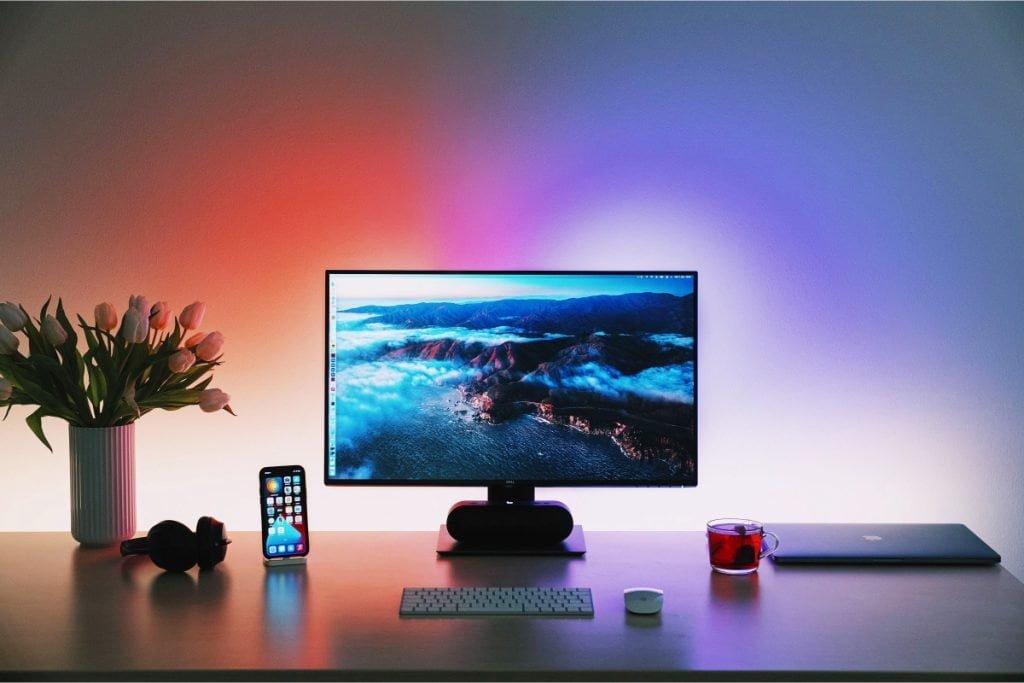
Can You Plug a Console Directly into a Gaming Monitor?
Yes, you can. PlayStation 5 and Xbox Series S/X both support HDMI 2.1. You can connect any HDMI-compatible monitor—and TV sets—to your console.
Why Are Gaming Monitors More Expensive Than TV Sets?
The answer is performance. TV sets are traditionally limited to either 50Hz (PAL) or 60Hz (NTSC) refresh rates, depending on the region. On the other hand, gaming monitors generally have a refresh rate of 120 or 144Hz with superior response times.
What Hz Monitor is Good for Console Gaming?
Any 120Hz display. All three current gen. Consoles (PS5, Xbox Series S/X) support 4K 120Hz output, thanks to HDMI 2.1.
Unsurprisingly, there are a lot of popular games that run at 120FPS on these consoles. Titles like Apex Legends, Fortnite, Call of Duty: Warzone, and Doom: Eternal—to name a few—have 120FPS modes.
Is 60 Hz Vs. 120 Hz Noticeable?
Absolutely! At 60Hz, each frame is displayed for 16.67ms. 120Hz cuts the latency time in half to 8.33ms.
120Hz refresh rate not only offers a dramatic improvement in visual fluidity—as compared to 60Hz—but also significantly cuts down the input latency.
Can PS4 or PS5 Run 144Hz?
Unfortunately, no. PlayStation 4 Pro only supports up to 4K 60Hz displays because of HDMI 2.0. Meanwhile, PlayStation 5 comes with HDMI 2.1, which supports up to 4K at 120Hz.
While you can connect a 144Hz display with the PlayStation 5, the screen refresh rate will cap at 120Hz.
Is 1440p better than 4k for the PS5?
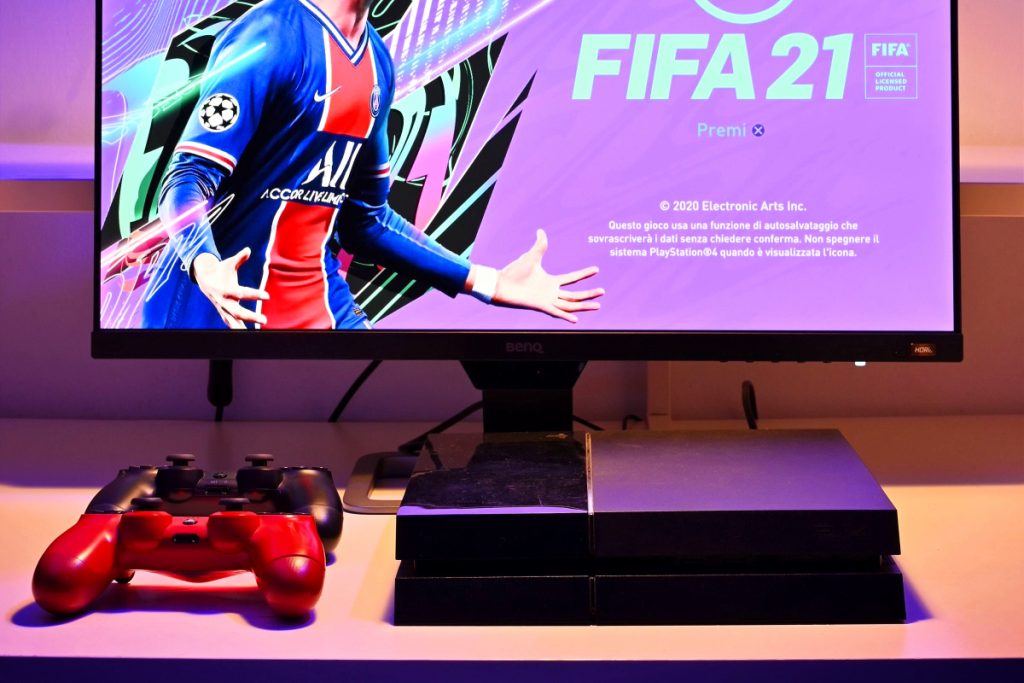
No.
Sony has recently added support for 1440p monitors, but that doesn’t make them better than 4K displays –plenty of games run at native 4K on the PlayStation 5.
While you can run 4K PS5 games on a 1440p monitor, the internal render resolution would remain at 4K. So, you won’t get any higher frame rates with a 1440p monitor, just a lower resolution.
What is the Best Size Monitor for Gaming?
It depends on your viewing distance. At a viewing distance of 3 feet or more, a display with around 100 PPI (Pixels Per Inch) is ideal. That means 28” for 1440p and 38” for 4K.
But for an optimal visual experience, aim for 125 DPI or more. That means 24” for 1440p and 32” for 4K. Is a 32-Inch Monitor Too Big for Gaming?
No. There is a reason monitors are available in different sizes, each with its uses. For example, a 32-inch monitor is ideal when viewed at a distance of 4 feet (or more) from the monitor.
Is a Curved Monitor Better for Gaming?
Yes. Curved monitors offer a more immersive gaming experience than traditional flat-screen monitors. Also, curved screens enhance your peripheral vision, giving you a competitive edge in gaming.
As a side benefit, curved displays also help reduce eye strain, as determined by a study conducted by Schepens Eye Research Institute at the Harvard Medical School.
Does a Curved Monitor Affect Your Aiming When Playing FPS Games?
Not at all! the opposite is true. Curved monitors offer a superior FOV (Field of View) than flat screen monitors. That means your eyes see more screen real estate from any particular angle.
In short, curved monitors should—and will—improve your aiming when playing FPS video games. You’ll find it easier to line up your shots while playing on a curved monitor.
What Gaming Monitor Does Nickmercs Use?
Twitch streamer Nickmercs uses a Dell Alienware AW2521H. It’s a 24.5” 1080p monitor with a 360 Hz refresh rate, G-Sync compatibility, and a 1 ms response time.
Conclusion
This concludes our review of the top console gaming monitors available in the market. As you’ve just read, each monitor has its strengths and weaknesses and caters to a different set of needs and requirements. Now, it’s up to you to figure out which suits you best!

